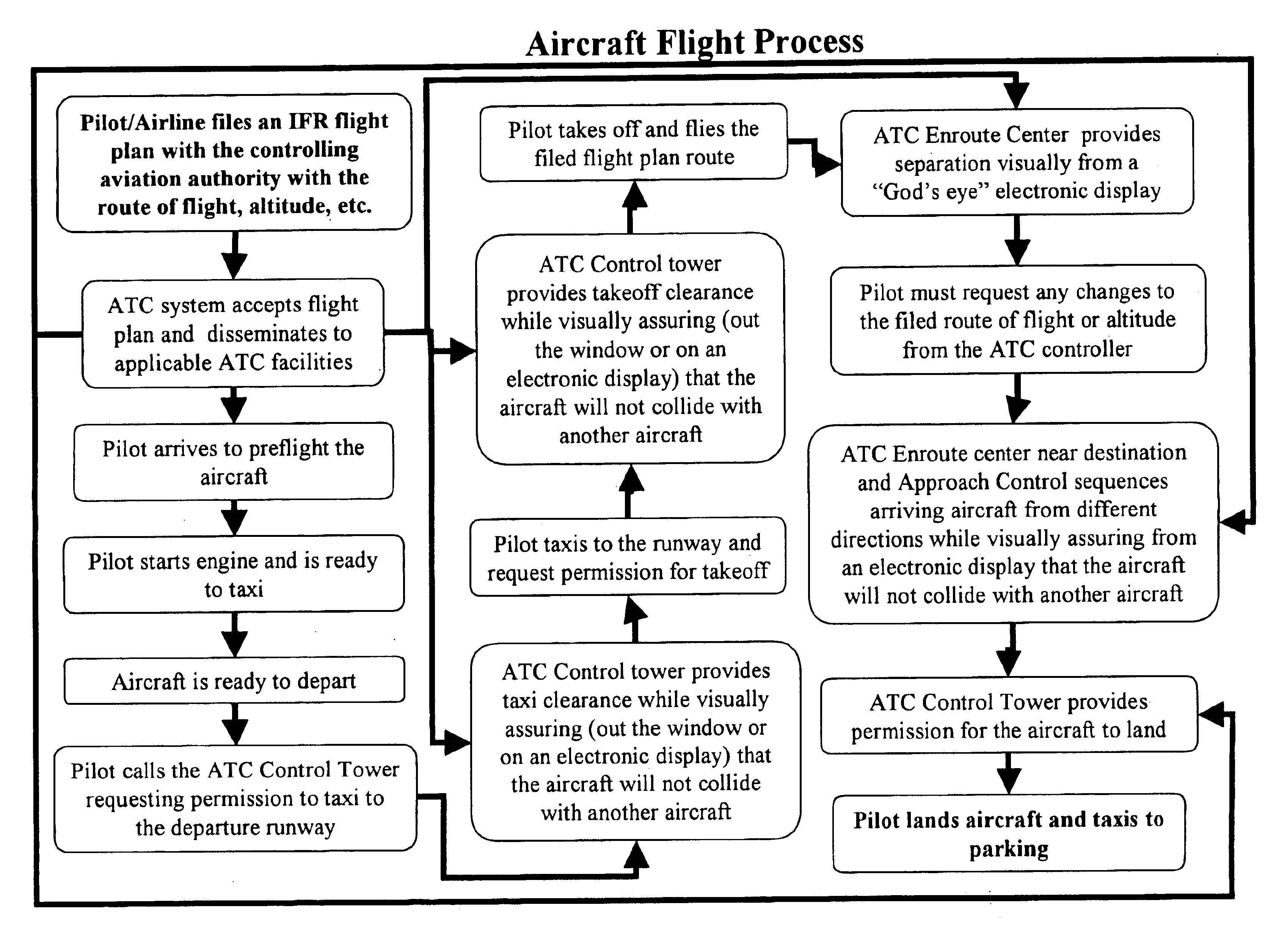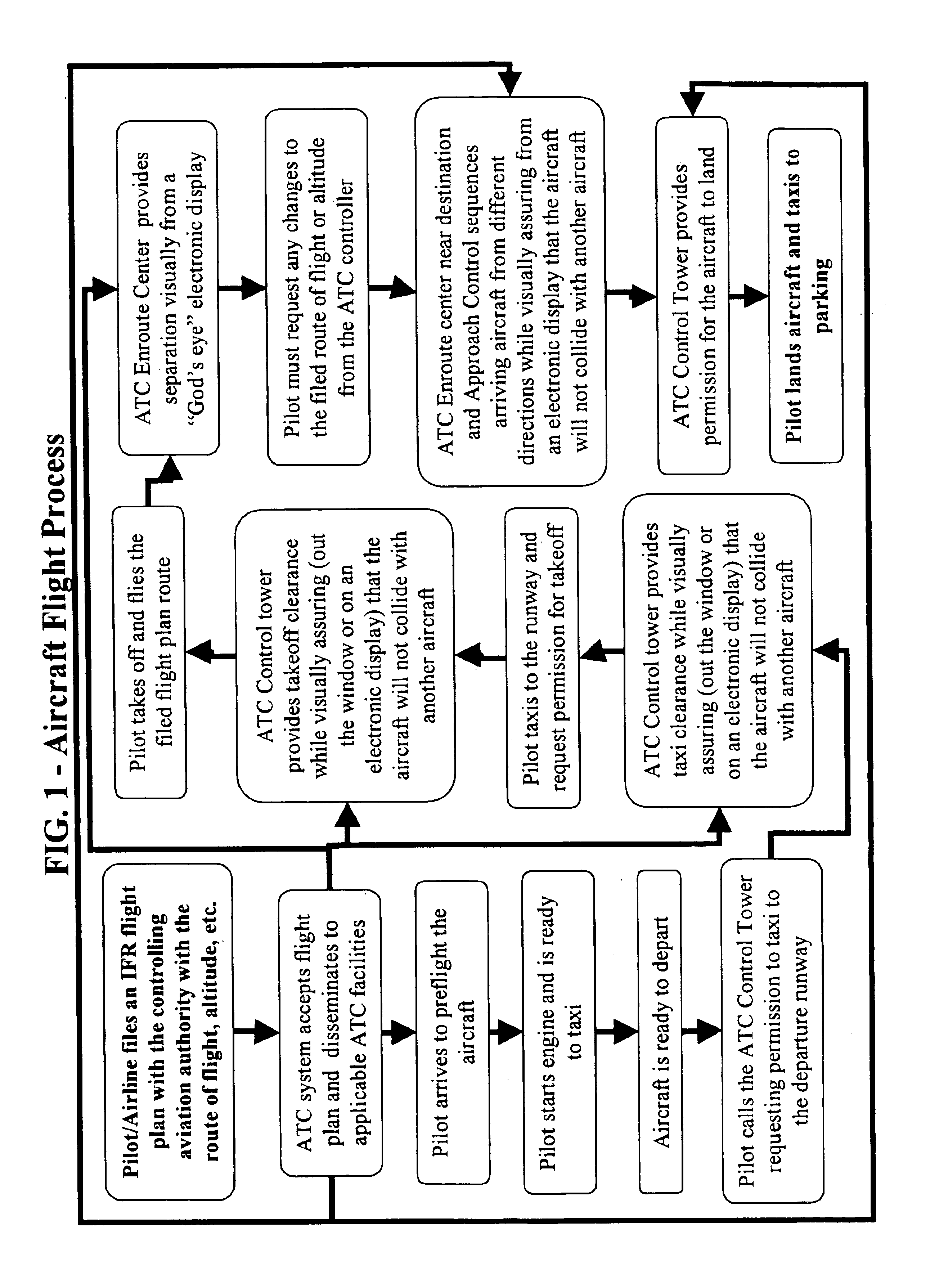Method and system for tracking and prediction of aircraft trajectories
a technology for aircraft and trajectories, applied in direction finders using radio waves, navigation instruments, instruments, etc., can solve the problems of not addressing the present and future movement of aircraft and other aviation assets, limiting the arrival/departure speed of all aircraft, and affecting so as to improve the management of aircraft and improve the accuracy of prediction, the effect of better tracking and predicting aircraft trajectories
- Summary
- Abstract
- Description
- Claims
- Application Information
AI Technical Summary
Benefits of technology
Problems solved by technology
Method used
Image
Examples
example 1
Updates to the arrival time for many airlines are currently based on the flight plan calculated prior to departure (sometimes hours in advance) and / or manual updates by the pilot. At a few airports, as the aircraft approaches the destination airport, the arrival time is further updated based on local conditions.
The present invention provides an improvement in the reliability of these predictions of the arrival time by better utilizing currently available data. For example, as an aircraft leaves the gate, many airlines utilize ACARS to automatically send a departure message from the aircraft to the airline. The present invention uses this information and analyzes the estimated departure demand at the runways (based on schedules, filed flight plans and other information), the distance from the gate to the departure runway, possible local airborne departure constraints again based on departure demand versus capacity, etc., so to more reliably predict the time when the aircraft will act...
example 2
One of the unique elements of the present invention is the concept of long or multi-segment trajectories. This involves the consideration of many factors and allows the present invention to predict potential problems in a future segment of a flight prior to or several flight segments before the future problematic segment.
To better understand this concept, it is instructive to first work backward to determine why an assumed problem occurred (e.g., a late RDU departure on a flight going to ORD). In this example, the aircraft that is to fly RDU to ORD departed ORD late on its way to RDU and was delayed enroute by weather. Looking farther back in time, the ORD late departure was caused by a late departure and arrival of the aircraft from MSP to ORD. And the late MSP departure was caused by the late arrival of the crew the previous evening who needed adequate crew rest for safety reasons.
Turning this around to a forward looking prediction process, see FIG. 15, once the present invention ...
example 3
When weather at an airport is expected to deteriorate to the point such that the rate of arrival / departures is lowered, the aviation authorities will “ground hold” aircraft at their departure points. Because of rapidly changing conditions and the difficulty of communicating to numerous aircraft that are being held on the ground, it can happen that announced one to two hour delays can be seen to be unnecessary within fifteen minutes of their initial announcement. Also, because of various uncertainties, it may happen that by the time the aircraft arrives at its destination, the constraint to the airport's arrival / departure rate is long since past and the aircraft is sped up for arrival / departure. An example of this scenario occurs when a rapidly moving thunderstorm clears the airport hours before the aircraft is scheduled to land.
The present invention helps avoid such needless “ground holds” by continually calculating arrival / departure times based on a large set of parameters, includi...
PUM
 Login to View More
Login to View More Abstract
Description
Claims
Application Information
 Login to View More
Login to View More - R&D
- Intellectual Property
- Life Sciences
- Materials
- Tech Scout
- Unparalleled Data Quality
- Higher Quality Content
- 60% Fewer Hallucinations
Browse by: Latest US Patents, China's latest patents, Technical Efficacy Thesaurus, Application Domain, Technology Topic, Popular Technical Reports.
© 2025 PatSnap. All rights reserved.Legal|Privacy policy|Modern Slavery Act Transparency Statement|Sitemap|About US| Contact US: help@patsnap.com



